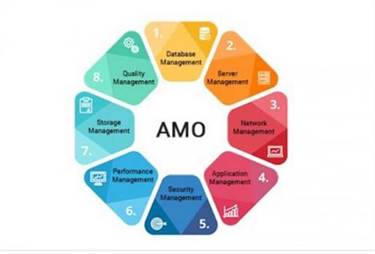However, we are in 2022 now, and new trends appear, making old ones irrelevant. Although Xamarin indeed remains one of the top application development toolkits, it seems that Xamarin’s popularity has begun to decline over the past year. If you have an Android phone or use iOS, you have most likely downloaded and installed some applications to your smartphone.

Despite the widespread availability of the internet, it is not always as reliable as we would ideally like it to be. Roughly a third of the world still lacks stable internet access, and even in developed countries, outages are surprisingly common. Learn the native mobile app development advantages of Android development and key resources that can improve your results. Developing an iOS app can be easy with proper planning and the right resources. Passionate about revolutionary technologies and products that can ignite behavior change.
What is Cloud Native?
Traditional enterprise applications were built using less flexible software development methods. Developers typically worked on a large batch of software functionalities before releasing them for testing. As such, traditional enterprise applications took longer to deploy and were not scalable. While the native iOS app has been created in Objective-C, the Android application is written in Java and developed on the Firebase platform. Since code is not highly specified according to device or platform, users may experience some performance delays. Native app development can be time-consuming, so you’ll need a longer lead time to develop and test the app before launching it.
Bugs are a significant problem when developing hybrid apps with the most recent features available for a specific operating system. It is an essential and often neglected aspect of building customer loyalty. One of the most popular ways to create applications, programs, or just software is to https://www.globalcloudteam.com/ make them natively. Native app development means creating a mobile application that is tailored and dedicated to a specified platform like iOS or Android. In this article, we saw how native mobile apps offer an exceptional experience, build high-performing solutions and enhance usability.
Key Benefits of Native Mobile App Development:
He had contact with every possible architecture and helped create many solutions for large and small companies. His daily duties include managing clients’ projects, consulting on technical issues, and managing a team of highly qualified developers. Pokémon Go may also use push notifications intended to bring users back to the game over time. Fortunately, you now have the information to make a proper distinction between both types of app development. Statistics show that, among global developers, Flutter is the most popular cross-platform mobile framework. 42 percent of software developers use Flutter, while 38 percent use React Native, which is the second-most popular mobile framework for cross-platform development.
Then comes the business logic and the way all workflows and processes are implemented as per the primary goal of the whole app. If the app architecture does not define the whole vision and roadmap, it is more than likely that the app will eventually fail. Stephan Miller is a freelance writer and software developer specializing in software and programming.
Difference Between a Native App and a Hybrid App
As a result, it’s important to plan out a cross-platform UI (user interface) early during development, as changing it can be quite difficult later on. The more layers, languages and technologies your application has, the more likely it is for vulnerabilities to creep in. Software developers write the applications for Android in Java, Kotlin or C++, while for iOS in Swift or Objective-C. They use different development software development kits (SDK) – Android Studio and Xcode for Apple. This is because the native application can directly access all the resources of the device.

While its main service is food delivery, it also offers deliveries from grocery stores, pharmacies, gift shops, supermarkets, and other commercial businesses. Here, you will find an example of unique medical applications available to healthcare providers and consumers. In the last 8 years, we have consulted almost 350+ businesses and have experience working with major industries. Therefore, we can offer unique ideas related to your industry once you connect with us. These figures are just a rough estimate to provide an overview of the cost.
Hybrid mobile development
Hybrid apps utilize a bridge that can slow down development and result in a poor user experience. When new versions of Android and iOS are released, this issue becomes more apparent. Native app developers access recent software development kits (SDK) to develop applications with the most up-to-date features.
- So as a user navigates through a native app, everything loads quickly, thereby considerably reducing the load speed.
- Apart from Google’s in-house tools, there are also many third-party solutions you can use for Android development.
- Cloud-native stack describes the layers of cloud-native technologies that developers use to build, manage, and run cloud-native applications.
- Testing the application in the early stages can save time that would be consumed otherwise in app revision and rectification.
- You can use a shared document or note-taking app, to keep your notes organized and easily accessible.
A cloud-enabled application doesn’t have the flexibility, resiliency, or scalability of its cloud-native counterpart. This is because cloud-enabled applications retain their monolithic structure even though they have moved to the cloud. Cloud computing is the resources, infrastructure, and tools provided on-demand by cloud vendors. Meanwhile, cloud native is an approach that builds and runs software programs with the cloud computing model.
Time of Development
The maintenance costs are typically amounting to 15 to 20% of the development costs. In contrast, a native app will always feel authentic, thereby ensuring a comfortable and intuitive user experience. Native apps are particularly beneficial in that they utilize the native UI and UX elements of their specific platform. Considering users are already accustomed to the specific UI nuances of each OS, any deviation from these can feel jarring.

Because they are coded to interact directly with the device’s hardware and software frameworks, you can expect that your application will remain performant and stable over time. Whether you choose native or hybrid mobile application development, one of the first hurdles you’ll need to overcome is the relatively limited resources on mobile devices. Your target mobile device will have much less processing power and memory than desktop computers or enterprise servers.
Sharing performance feedback
Learn the main differences between these options and choose the best one for your project now. If you want to continuously upgrade your application with the latest features or trends, then developing a native application is the ideal choice. Because in the cross-platform approach, developers face difficulties with upgrading, modifying, or adding new features. Your application may be developed at a lesser or higher price than our provided amounts.

No comment yet, add your voice below!